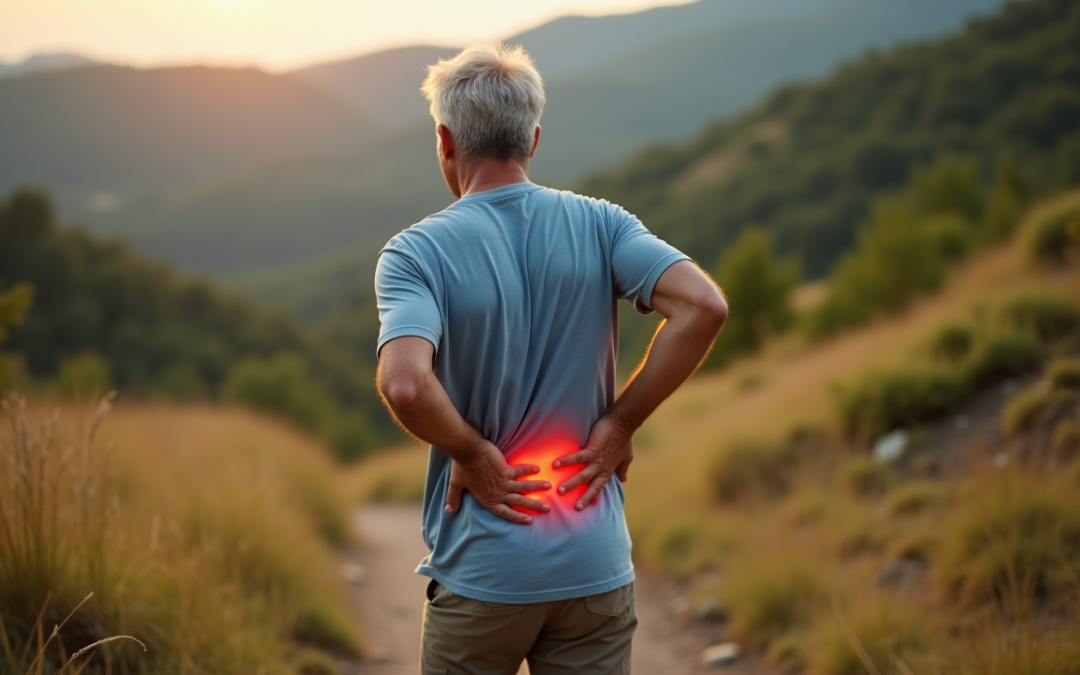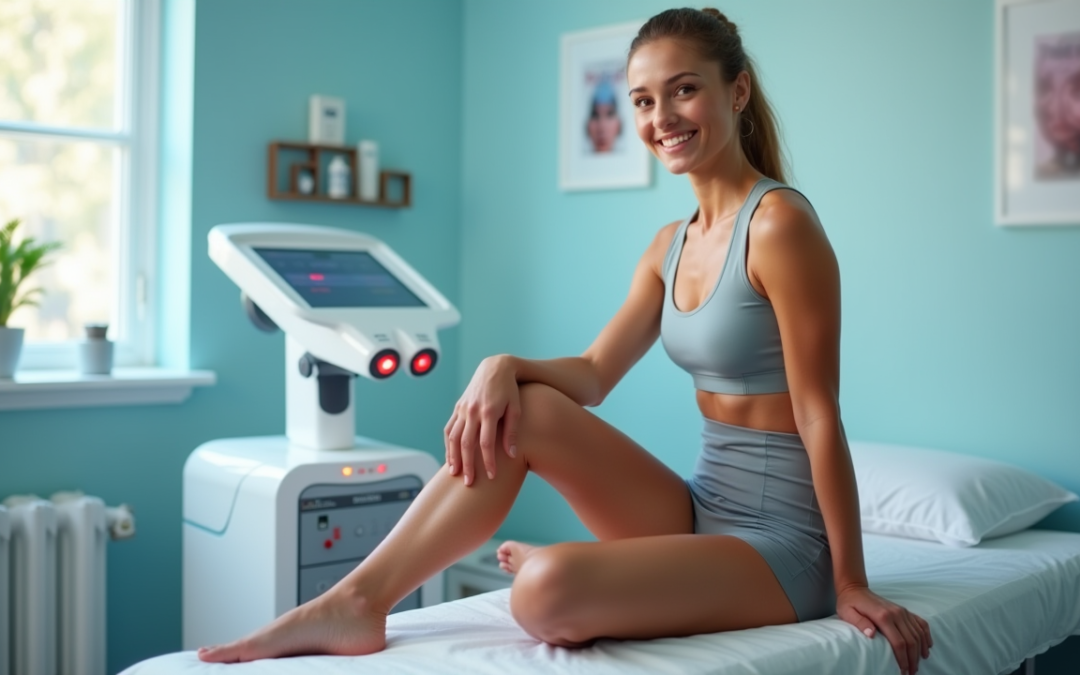
by TriNatural Healthcare | Apr 1, 2025 | Chiropractic, Unlocking Pain Relief
Low back pain is a pervasive issue, affecting millions of people worldwide. It is one of the leading causes of missed workdays, reduced productivity, and diminished quality of life. While there are many treatment options available, chiropractic care has consistently stood out as a safe, effective, and non-invasive approach to managing low back pain. This article explores the science behind chiropractic care, its benefits, and why it remains a go-to option for individuals seeking relief from this common ailment.
Understanding Low Back Pain
Low back pain can originate from a variety of causes, including:
- Muscle strain or sprain: Often resulting from overuse, poor posture, or sudden movements.
- Herniated discs: A condition where the soft, gel-like center of a spinal disc pushes through its outer layer, irritating nearby nerves.
- Degenerative conditions: Such as osteoarthritis or degenerative disc disease, which naturally occur with age.
- Postural issues: Poor sitting, standing, or sleeping habits can lead to chronic stress on the lower back.
The complexity of the spine, with its intricate network of bones, muscles, ligaments, and nerves, makes low back pain challenging to treat effectively. This is where chiropractic care plays a pivotal role.
What Is Chiropractic Care?
Chiropractic care focuses on diagnosing and treating disorders of the musculoskeletal and nervous systems, particularly those involving the spine. Chiropractors use manual adjustments, spinal manipulations, and other techniques to restore proper alignment, alleviate pain, and enhance the body’s natural healing processes.
The foundation of chiropractic care lies in the belief that proper spinal alignment is essential for overall health. Misalignments, or “subluxations,” in the spine can disrupt the nervous system, leading to pain and other health issues.
How Chiropractic Care Benefits Low Back Pain
1. Non-Invasive and Drug-Free Relief
One of the most significant advantages of chiropractic care is its non-invasive nature. Unlike surgical interventions, which carry risks and long recovery times, chiropractic adjustments are gentle and focus on restoring function without requiring incisions. Furthermore, it avoids the use of pain-relieving medications, which can come with side effects and the potential for dependency.
2. Targeting the Root Cause of Pain
Chiropractors are trained to identify the underlying causes of low back pain. Rather than masking symptoms, they work to correct spinal misalignments, improve joint mobility, and reduce inflammation. Addressing the root cause helps prevent recurrence, offering long-term benefits.
3. Improved Spinal Alignment and Function
Through spinal adjustments, chiropractors restore proper alignment to the vertebrae, reducing pressure on nerves and muscles. This can result in immediate pain relief, improved posture, and enhanced mobility.
4. Complementary Care
Our treatment complements other treatment modalities. We are proud to offer acupuncture and professional massage in our office.
5. Evidence-Based Effectiveness
Numerous studies support the efficacy of chiropractic care for low back pain. A 2018 study published in JAMA Network Open found that spinal manipulative therapy combined with standard medical care provided better pain relief and function compared to medical care alone. Similarly, a review by the Cochrane Library concluded that spinal manipulation is as effective as other common interventions for chronic low back pain, with fewer risks.
Chiropractic Techniques for Low Back Pain
Chiropractors use a variety of techniques tailored to each patient’s needs.
Spinal Manipulation (Adjustments)
This involves applying controlled force to specific joints to improve alignment, reduce nerve irritation, and restore range of motion. Adjustments are often accompanied by a popping sound, which is simply the release of gas from joint spaces.
Mobilization
A gentler technique that involves stretching and moving the joints to enhance mobility.
Soft Tissue Therapy
Techniques such as Active Release Technique and Graston can help relieve muscle tension and promote healing.
Ergonomic and Lifestyle Advice
Chiropractors frequently provide guidance on posture, workplace ergonomics, and lifestyle modifications to minimize strain on the lower back and promote long-term health.
Who Can Benefit from Chiropractic Care?
Chiropractic care is suitable for a wide range of individuals experiencing low back pain, including:
• Those with acute or chronic low back pain.
• Patients seeking a non-surgical, drug-free treatment option.
• Athletes and active individuals recovering from injuries.
• Office workers dealing with postural-related discomfort.
It is essential, however, to consult with a qualified chiropractor to determine the appropriateness of care, especially for individuals with conditions such as osteoporosis, severe arthritis, or certain types of spinal deformities.
Safety and Considerations
Chiropractic care is widely regarded as safe when performed by a licensed and trained professional. Serious complications are rare, and most patients experience little to no discomfort after adjustments. However, patients should always disclose their full medical history to their chiropractor to ensure the treatment plan is suitable.
The Role of Chiropractic in Preventative Care
In addition to treating existing low back pain, chiropractic care plays a significant role in prevention. Regular adjustments can help maintain proper spinal alignment, reducing the likelihood of future pain episodes. Furthermore, chiropractors emphasize education and empowerment, teaching patients how to maintain a healthy spine through exercise, proper lifting techniques, and ergonomic practices.
Real-World Testimonials
Please check our five star review average on Google.
Conclusion
Low back pain can be a debilitating condition that affects every aspect of life. Chiropractic care offers a safe, effective, and holistic solution to address this common issue. By focusing on spinal alignment, reducing nerve irritation, and promoting overall wellness, chiropractic care not only alleviates pain but also helps prevent its recurrence.
If you’re struggling with low back pain, consider consulting a licensed chiropractor to explore how their expertise can help you regain your health and quality of life. With its proven benefits, chiropractic care continues to be a cornerstone in the fight against low back pain.

by TriNatural Healthcare | Feb 15, 2025 | Chiropractic, Unlocking Pain Relief
In the evolving landscape of alternative healthcare, one therapy is rapidly gaining recognition for its non-invasive, pain-free, and highly effective approach to treating various conditions: Erchonia laser therapy. This cutting-edge treatment utilizes low-level laser technology to promote healing, reduce pain, and improve overall well-being. In this comprehensive guide, we explore what Erchonia laser therapy is, how it helps patients, and what new patients can expect during their first session. Additionally, we’ll touch on the benefits of integrating this therapy into a holistic healthcare approach that includes chiropractic care, acupuncture, and massage therapy.
What Is Erchonia Laser Therapy?
Erchonia laser therapy employs low-level laser technology (LLLT), often referred to as cold laser therapy. Unlike high-powered lasers used for surgical or ablative purposes, low-level lasers deliver light energy at specific wavelengths to stimulate cellular activity without causing heat or damage to the tissues. The Erchonia Corporation, a leader in medical laser technology, developed and patented this therapy after extensive clinical research demonstrating its efficacy in reducing pain, inflammation, and promoting tissue regeneration.
The technology works by penetrating the skin and interacting with mitochondria, the energy-producing components of cells. This interaction enhances cellular metabolism and accelerates the body’s natural healing processes, making it an excellent option for various health concerns.
How Erchonia Laser Therapy Helps Patients
1. Pain Relief
One of the most common uses for Erchonia laser therapy is its ability to alleviate pain. By reducing inflammation and promoting blood flow, it can effectively treat:
- Chronic pain conditions like arthritis and fibromyalgia
- Acute injuries such as sprains and strains
- Post-surgical discomfort
2. Improved Recovery Time
Athletes and individuals recovering from injuries or surgeries can benefit from faster healing times. The therapy stimulates cell repair and tissue regeneration, allowing the body to recover more quickly and efficiently.
3. Reduction of Inflammation
Inflammation is a common underlying factor in many chronic diseases. Erchonia laser therapy reduces pro-inflammatory markers while promoting anti-inflammatory responses, helping patients manage conditions like:
- Tendinitis
- Plantar fasciitis
- Carpal tunnel syndrome
4. Neurological Benefits
Erchonia laser therapy has shown promise in addressing neurological concerns by improving nerve function and reducing neuropathic pain. Conditions such as sciatica and peripheral neuropathy have been successfully treated with this therapy.
5. Enhanced Mental Clarity and Mood
Low-level laser therapy is believed to improve mental clarity and mood by reducing stress and balancing neurotransmitter activity. This makes it a complementary treatment for conditions like anxiety and depression.
What New Patients Can Expect
If you’re new to Erchonia laser therapy, it’s natural to have questions about what the experience will entail. Here’s a step-by-step guide to help you prepare:
Initial Consultation
Your journey begins with a thorough consultation with your healthcare provider. During this session, you’ll discuss your medical history, current symptoms, and treatment goals. This information helps the provider determine if Erchonia laser therapy is right for you.
Customized Treatment Plan
Based on your consultation, your provider will design a personalized treatment plan tailored to your specific needs. The plan will outline the number of sessions required, expected outcomes, and any additional therapies that might complement the laser treatment.
During the Session
- Non-Invasive Procedure: You’ll be seated or lying down comfortably while the laser device is applied to the treatment area.
- No Pain or Downtime: The procedure is entirely painless, and you can resume your daily activities immediately after the session.
- Session Length: Each session typically lasts between 15 to 30 minutes, depending on the treatment area and condition being addressed.
After the Session
Many patients report feeling immediate relief or improvement in their symptoms. For chronic conditions, several sessions may be necessary to achieve optimal results.
Integrating Erchonia Laser Therapy into a Holistic Healthcare Approach
While Erchonia laser therapy is powerful on its own, it’s most effective when combined with other alternative healthcare modalities. A holistic approach considers the interconnectedness of the body, mind, and spirit, addressing the root cause of health issues rather than just managing symptoms. Here’s how other therapies can enhance your healing journey:
Chiropractic Care
Chiropractic adjustments restore proper alignment to the spine, improving nervous system function and reducing pain. Combining chiropractic care with Erchonia laser therapy can enhance treatment outcomes, particularly for musculoskeletal issues.
Acupuncture
Acupuncture promotes the flow of energy (or “Qi”) through the body, addressing imbalances that contribute to pain and illness. The calming effects of acupuncture complement the cellular healing promoted by laser therapy.
Massage Therapy
Massage reduces muscle tension, improves circulation, and promotes relaxation. When paired with Erchonia laser therapy, patients often experience a synergistic effect that amplifies pain relief and accelerates recovery.
Why Choose a Holistic Approach?
Incorporating multiple therapies into your healthcare plan can:
- Address both physical and emotional aspects of healing
- Reduce reliance on medications
- Promote long-term health and wellness
Conclusion
Erchonia laser therapy is a groundbreaking alternative healthcare solution that offers a safe, non-invasive, and highly effective way to address a wide range of conditions. Whether you’re seeking relief from chronic pain, recovering from an injury, or looking to enhance your overall well-being, this therapy can be a valuable addition to your healthcare regimen.
By integrating Erchonia laser therapy with holistic practices such as chiropractic care, acupuncture, and massage therapy, patients can experience comprehensive, whole-body healing that addresses the root cause of their concerns. If you’re ready to take the next step toward better health, contact your local alternative healthcare provider today to schedule a consultation and discover how Erchonia laser therapy can transform your wellness journey.





